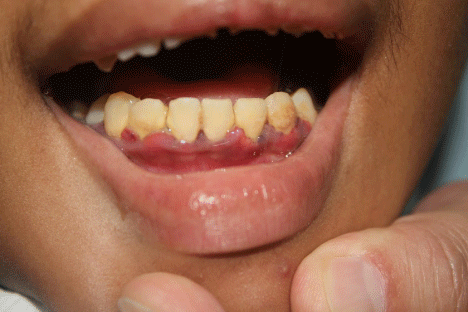
Clinical Image
Austin J Dermatolog. 2014;1(6): 1026.
Classic Scurvy
Rattanakemakorn P* and Chanpraparp K
Department of internal medicine, Mahidol University, Thailand
*Corresponding author: Rattanakemakorn P, Division of Dermatology, Department of internal medicine, Mahidol university, 270 Rama VI, Rajthe vi, Bangkok10400, Thailand
Received: October 08, 2014; Accepted: October 10, 2014; Published: October 13, 2014
Clinical Image
A 10-year-old boy with underlying epilepsy from traumatic brain injury presented with a 2-week history of asymptomatic rash on thighs, legs and gum. His mother feeds him with regular blender diet through gastrostomy tube. He had extensive bright red none blanch able patches on both thighs and legs with hyper keratotic perifollicular papules and corkscrew hairs. He also had asymptomatic hypertrophic hemorrhagic gums.
Figure 1: Clinical image showing hyperkeratotic papules with perifollicular hemorrhage and corkscrew hair (red arrows).
Figure 2: Clinical image showing gingival hemorrhage on lower gum.
What is scurvy?
Scurvy is a disease resulting from an ascorbic acid deficiency. The ascorbic acid is required as a cofactor for collagen synthesis. Defective collagen in connective tissue within blood vessel wall leads to spontaneous rupture of capillaries.
The diagnosis of scurvy was made based on diet history with lack of fresh fruit and vegetables, classic clinical manifestations and rapidly response to treatment. The patient was treated with 1000 mg of ascorbic acid daily, and the rash resolved after 1 week of treatment.
References

